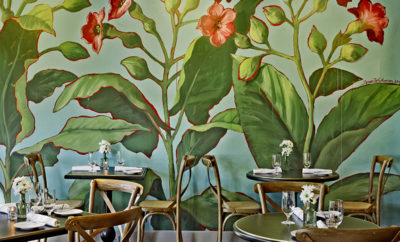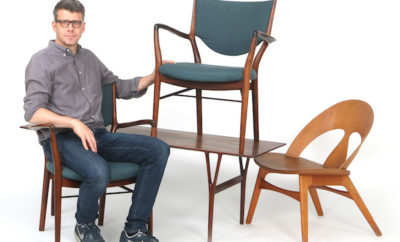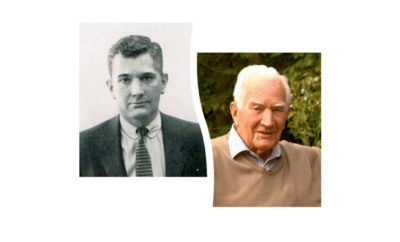
Design
Neglected Nordics
NAMES SUCH AS ALVAR AALTO OF FINLAND, Hans Wegner of Denmark, and Stig Lindberg of Sweden roll off the tongue of even a modestly informed admirer of Scandinavian modernism. True aficionados can readily identify three, four, or as many as five star designers of the mid-twentieth century from each country in the region—except, very likely, for one: Norway.
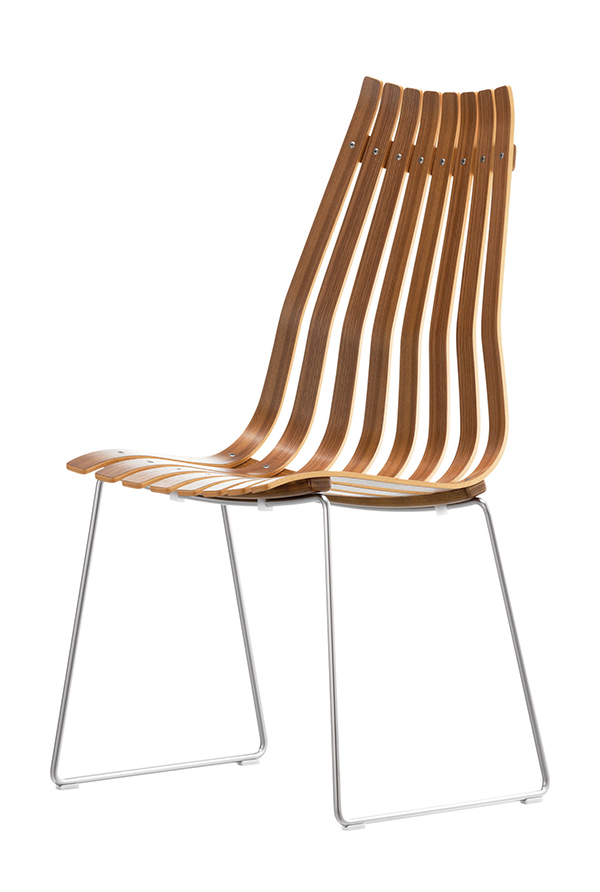
Scandia Prince chair designed by Hans Brattrud, 1960, made by Fjordfiesta, in lacquered, laminated American oak. Courtesy of Fjordfiesta.
Though their country has a long tradition of craftsmanship, for numerous reasons mid-century Norwegian designers never gained the same international renown as their peers in neighboring nations. Modernism came somewhat late to Norway. The country did not win full independence from Sweden until 1905, and designers seeking to project a new sense of national identity in their work turned to their Viking ancestors for inspiration, creating pieces heavy in ornamental motifs such as knots and dragons.
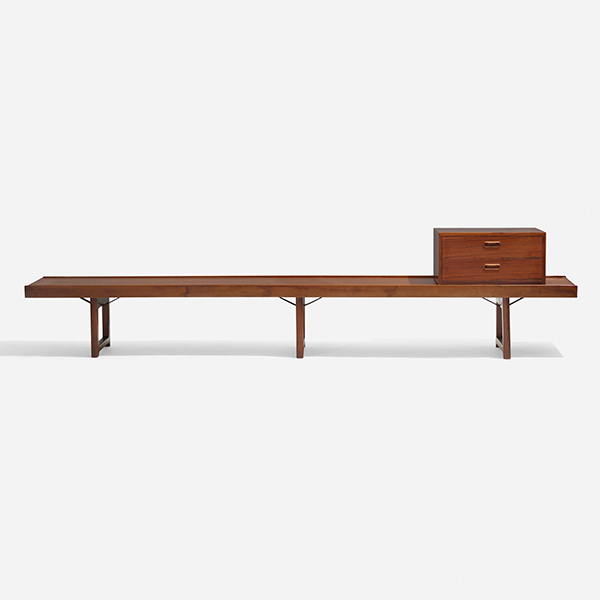
Krobo 150 bench and cabinet designed by Torbjørn Afdal and made by Mellemstrands Trevareindstri for Bruksbo, c. 1962, of teak, rosewood, and enameled steel. Courtesy of Wright.
Modernist influences eventually crept in, but a university-level school of design did not open in Norway until 1939. Shortly after, the nation was invaded by Nazi Germany and endured a brutal wartime occupation, during which German forces destroyed much of the nation’s infrastructure. Tasked with refurnishing Norway’s households, designers in the postwar period focused on simple, well-made pieces of homegrown woods such as walnut and pine (in contrast to the Danes’ use of imported hardwoods such as teak). Design historian Judith Gura (whose profile of sculptor-designer Albert Paley appears on page 90) notes in her Sourcebook of Scandinavian Furniture that the “emphasis on quality and practicality rather than on distinctive design may explain Norway’s failure to produce ‘name’ designers.”
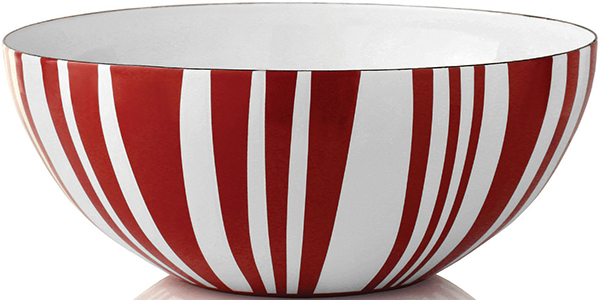
Stripes bowl designed by Grete Prytz Kittelsen, c. 1950–1960, as part of the Stripes collection
made in collaboration with Cathrineholm enamel works. Courtesy of Cathrineholm of Norway
Finally, as Richard Wright of the eponymous Chicago auction house points out, Norwegians took a “quieter” approach to design, and, sadly, had the same attitude toward marketing. Norway’s industry and government did not pursue the same aggressive promotional strategy as their neighbors, one that would make “Danish modern” a staple of the interior design lexicon in the 1950s and 1960s.
So let’s redress that inattention. Here are several key mid-century Norwegian design talents whose names you should know:
The one Norwegian designer whose work did gain some traction internationally was Hans Brattrud, whose Scandia chairs have a striking—and often imitated— profile: an array of curved, vertically oriented laminated wood slats set atop a wire frame. First introduced in 1960, Scandia chairs have been manufactured since 2010 by the cutely named Norwegian firm Fjordfiesta.
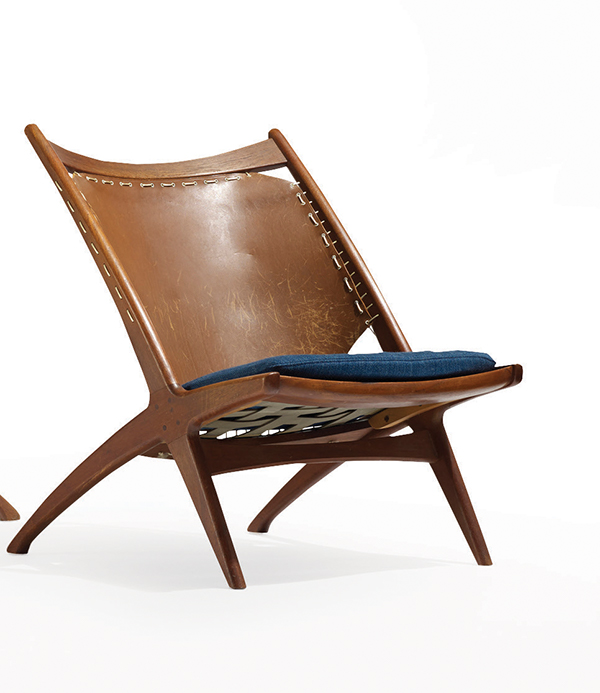
Kryss (Cross) lounge chair designed by Fredrik A. Kayser and made by Gustav Bahus, 1955, of teak, leather, and upholstery. Courtesy of Wright.
Had he not died painfully young in 1968 at the age of forty-four, Fredrik A. Kayser might have become an icon of modern design. His furniture has the same dynamic visual appeal as that of Vladimir Kagan. Kayser was one of the few Norwegians to employ tropical hardwoods such as rosewood, pairing them with humbler artisanal materials like cane. One archetypal Kayser design is the Kryss lounge chair, which combines a leather panel back stitched into a rakish X-shaped teak frame.
At the other end of the aesthetic spectrum lies the work of Torbjørn Afdal, which has the spare geometry of furniture produced by Bauhaus designers. A classic example of his work is the Krobo 150 bench: offering a spot to sit and remove your boots when coming home, it’s a sliver of rosewood set on trestle-shaped legs, equipped (as a practical addition) with a pair of drawers for gloves and scarves and such.
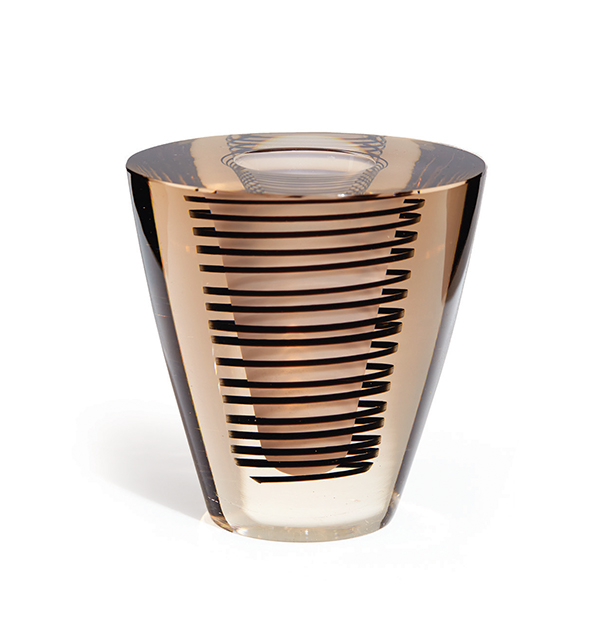
Spiral vase designed by Willy Johansson and made by Hadeland Glassworks, c. 1952, in black and champagnecolor glass. Courtesy of Blomqvist.
Trained in industrial design at the Royal College of Art in London in the 1950s, Sven Ivar Dysthe produced furniture with solid and elegant minimalist lines. He worked in luxury materials such as rosewood, but also created the affordable plywood Laminette chair, a 1965 design that is touted as the all-time bestselling seating piece in Norway. Dysthe also had a playful side, as evidenced by his stackable Popcorn chair of 1968: a padded plastic shell on a metal frame that resembles a skier headed downhill.
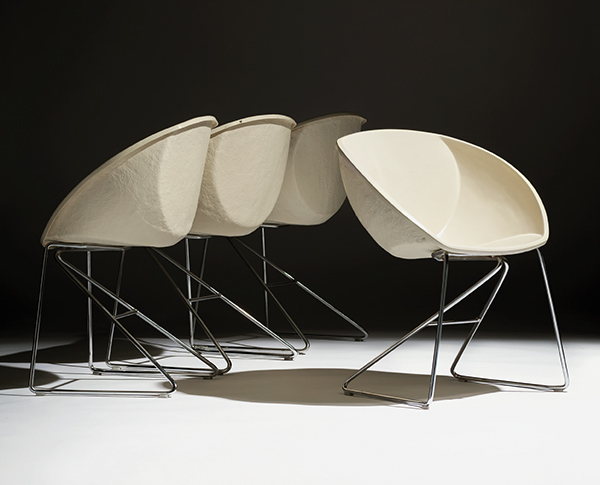
Popcorn chairs designed by Sven Ivar Dysthe and produced by Møre Lenestolfabrikk, 1968. Courtesy of Blomqvist.
Though overshadowed by its counterparts in Sweden and Finland, Norway developed a thriving glassware industry in the twentieth century. The star of the field in the postwar years was Willy Johansson, a winner of multiple awards at the Milan Triennale. Known for his brilliant, offbeat sense of color, Johansson is represented in several prominent international art glass collections, most notably that of the Corning Museum of Glass.
Danes are generally disdainful of designers from other nations, but even they bow their heads to Grete Prytz Kittelsen. Peter Kjelgaard, of Copenhagen’s Bruun Rasmussen Auctioneers, calls her work “poetic,” and adds that she and her husband, architect Arne Korsmo, “were like the Norwegian Ray and Charles Eames.” Prytz Kittelsen’s specialty was enamels. An egalitarian designer, she produced both affordable work such as the colorful kitchen and tableware sets made by the manufacturer Cathrineholm as well as lavish enameled silver and gold jewelry. She also collaborated with the Venetian glassmaker Paolo Venini on a striking group of necklaces.
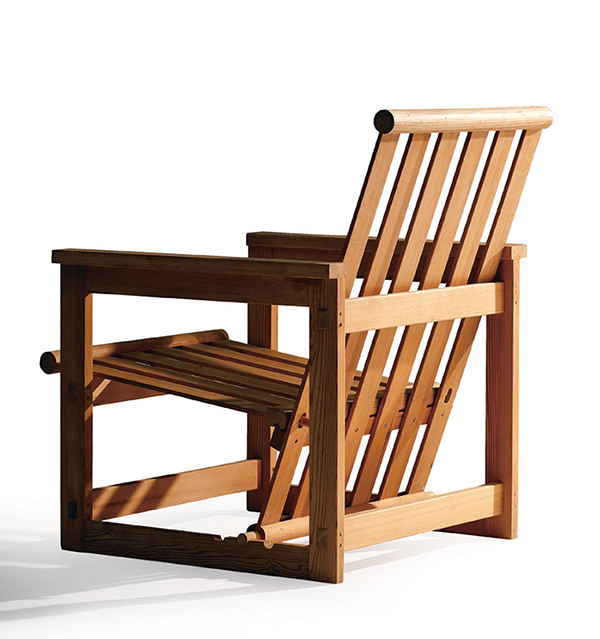
Armchair prototype from Edvin Helseth’s Trybo series, 1965, in pine. Courtesy of Blomqvist.
Those who appreciate a rational—as opposed to intuitive—approach to design will be interested in the work of Edvin Helseth, who, unusually, began his career as an interior decorator. He specialized in furnishings systems made of pine components that could be shipped in flat packs, and easily assembled in multiple configurations. As much as it evinces a straightforward theory-put-in-practice sensibility, a design like Helseth’s Trybo adjustable lounge chair of 1965 has an attractively spare grace. His work “was for simple homes and simple cabins,” says an admirer, Oslo architect Richard Øiestad. “It’s one of the reasons he’s forgotten.”
As with that of other Norwegian designers of earlier decades, it is past time to remember his work.


